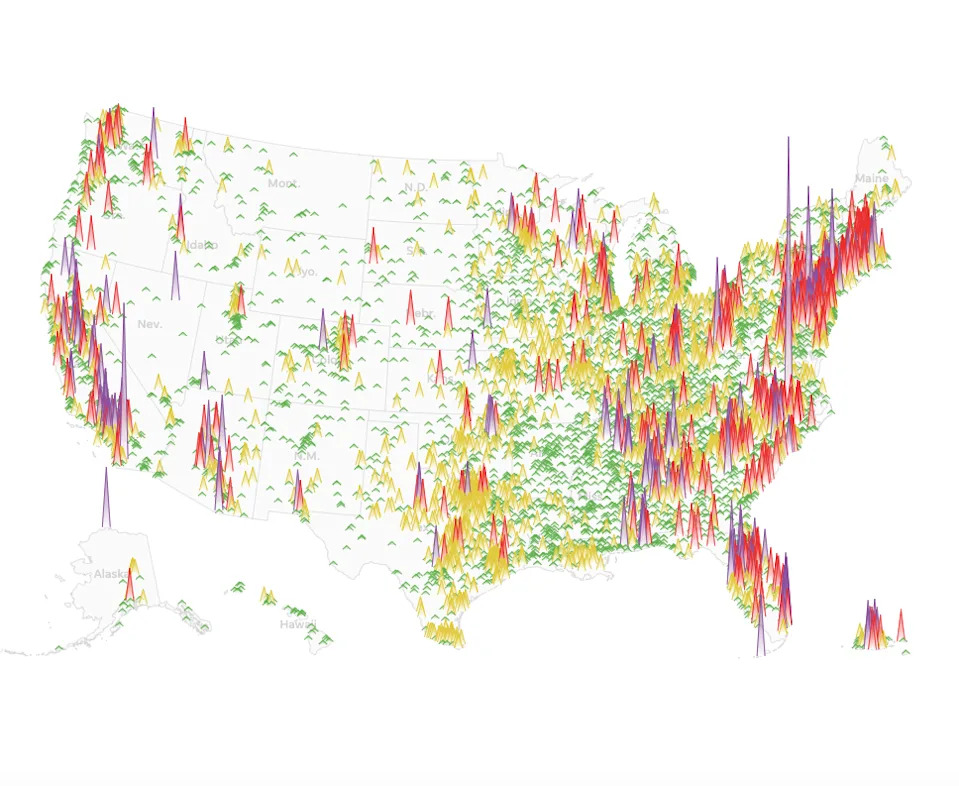The U.S. Environmental Protection Agency (EPA) is nearing the end of its PFAS (per- and polyfluoroalkyl substances) testing initiative, revealing areas where contamination was found in drinking water systems.
PFAS belong to a group of chemicals engineered to repel liquids and heat, making them nearly indestructible. These chemicals can build up in nature and in human bodies, increasing the risk of certain cancers and other health problems.
Over the last three years, the EPA has required most public drinking water systems that serve at least 3,300 residents to sample and report measurements for several types of forever chemicals, USA Today reported.
Are there 'forever chemicals' in Louisiana's drinking water? What to know
PFAS were detected in a number of water systems in Louisiana, with contaminated areas having around 2,470 water systems that detected PFAS, yet the annual average wasn't over a limit that the EPA does not currently limit.
Other parts of Louisiana had no detectable amounts of the 29 forever chemicals in the water, and there were no areas where PFAS were measured to be over the limit or well over the limit, according to a map of EPA test results provided by USA Today.
Areas where the EPA detected contamination now need to find other sources of drinking water or install filtration systems that can remove PFAS within the next few years.
The deadline to find different sources or install filtration systems was set for 2029, however, the EPA announced plans for an extension back in May.

The drinking water system, and the Louisiana city, where PFAS were detected in drinking water systems by the EPA include:
Pointe Coupee Water Works District 1 in New Roads
Intracoastal Water System West and City of Plaquemine Water System in Plaquemine
Village of Parks Water System in Parks
Parish Utilities of Ascension in Donaldsonville
City of Jeanerette Water System in Jeanerette
City of Abbeville Water System in Abbeville
Assumption Parish WW District 1 in Napoleonville
St. James Water Ditrict 2 in Convent
Lutcher Waterworks in Lutcher
Gramercy Waterworks in Gramercy
Patterson Water System in Patterson
Town of Berwick in Berwick
Water & Sewer Commission 4 of St. Mary in Charenton
St. Mary Water & Sewer Comm #3 in Centerville
St. John Water District 2 in Laplace
Schriever Water Treatment Service Area and Houma Water Treatment Service Area in Houma
Southwest Allen WW District No. 2 in Kinder
St. Charles Parish Dept. of Waterworks in Luling
St. Tammany Parish Cross Gates SD in Covington
E Jefferson WW District 1 and W Jefferson WW District 2 in Jefferson
Lafourche Water District 1 in Lockport
New Orleans Algiers Water Works and New Orleans Carrollton WW in New Orleans
Gretna Waterworks in Gretna
Bella Chasse Water District in Belle Chasse
Tensas Water District Association in St. Joseph
Natchitoches Water System in Natchitoches
Port Sulphur Water District in Belle Chasse
Rayville Water System in Rayville
South Toledo Bend Water District in Many
Monroe Water System and Town & Country Service in Monroe
Farmerville Water System in Farmerville
Village Water System and Town of Benton Water System in Benton
Shreveport Water System and Pinehill Waterworks District in Shreveport
Town of Greenwood Water System in Greenwood
All of these water systems had lower detections of PFAS, meaning the annual average was not over the EPA limit or a type that the EPA does not currently limit was detected.
Presley Bo Tyler is a reporter for the Louisiana Deep South Connect Team for Gannett/USA Today. Find her on X @PresleyTyler02 and email at [email protected]
This article originally appeared on Shreveport Times: Are there forever chemicals in Louisiana drinking water? EPA data








Comments